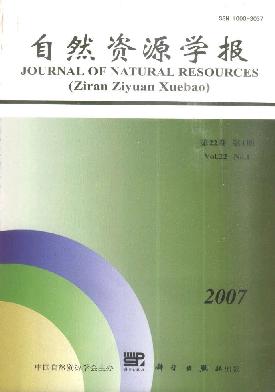Special Column:Celebration of the 70th Anniversary of IGSNRR, CAS
LI Zong-yao, YANG Gui-shan, DONG Ya-wen
A region's ecological security pattern is the basis and guarantee of its sustainable development.In its establishment,we need to play an active role in controlling detrimental disturbance and exercising profitable disturbance,thus achieving coordination of the ecosystem and the socioeconomic system.In the rapidly developing regions,vigorous human activities bring great pressure to the ecosystem,and we need a harmonious ecological pattern,which can protect the stability of regional ecosystem and guarantee the regional sustainable development by horizontal linkage of the ecological space and the urban space.Taking the area along the Yangtze River in Anhui Province(the AYRAP)as an example,through an analysis of eco-sensitivity and ecological service importance,this article finds that the areas that need special ecological protection are the mountainous areas in the southern and western AYRAP,the mainstream of the Yangtze River and the wetland around Chao Lake.Through an analysis of the economic development potentiality,it also concludes that the regions taking priority in economic development are the urban areas of Hefei,Ma'anshan,Wuhu,Tongling,and Anqing,in the meantime,where the priority should be given to the economic development.In terms of the ecological features of the AYRAP,an ecological security pattern should be established,consisting of 3 ecological sources,7 ecological corridors and numerous ecological patches and wedges.The 3 ecological sources are the hilly land in western Anhui province,the hilly land in southern Anhui province and the lake district of central Anhui province,occupying an area of 22,000 km2,accounting for 35% of the total AYRAP.Six river(blue)ecological corridors should be constructed,consisting of major rivers and the greenbelts along them;1 road(green)ecological corridor should also be constructed,based on the greenbelts along the major roads.The 6 blue corridors are the Corridor of the Yangtze River,the Corridor of the Shuiyang River,the Corridor of the Qingyi River,the Corridor of the Qiupu River,the Corridor of the Wan River and the Corridor of the Yuxi River.The green corridor refers to the Hefei-Tongling-Huangshan Corridor.These corridors,about 50-100m in width,horizontally link the ecological sources and patches and the areas of intensive development of urban industries,forming a stabilized pattern of the ecological space and the urban space.
